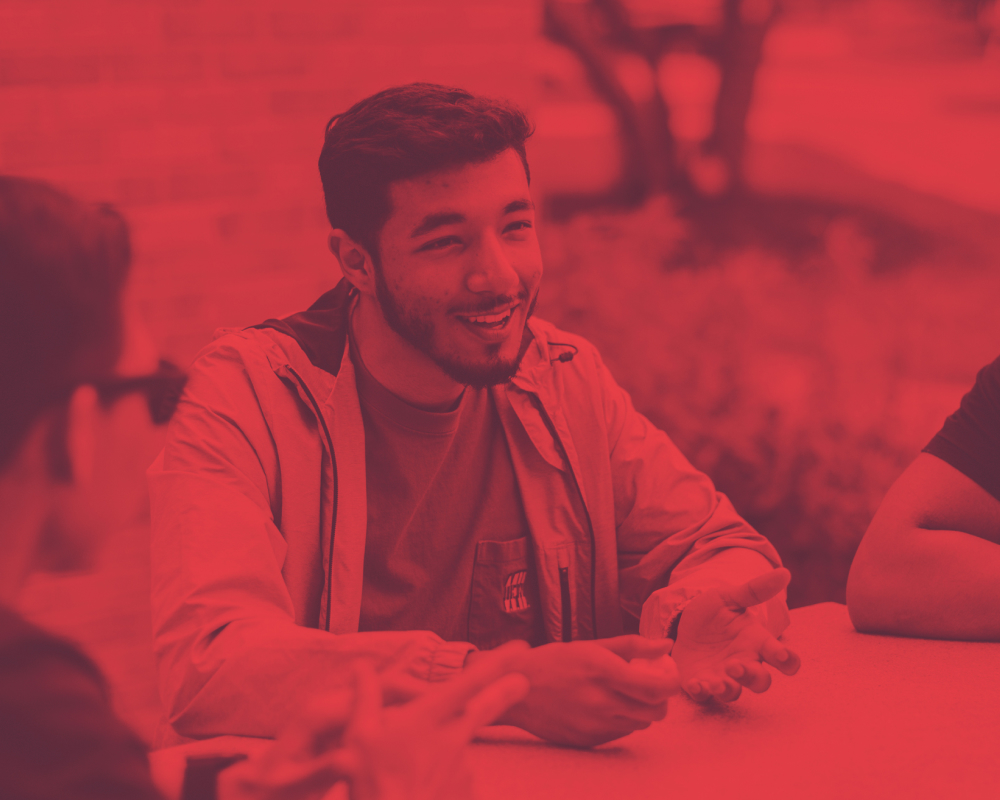
North Central College Webinar Series
Exploring the Ripples of COVID-19
North Central College welcomes you to share in our free summer webinar series centered on the COVID-19 pandemic and the many effects it has in our lives and throughout our communities, as well as within a broader cultural and historical context. Below you will find informative sessions presented by North Central faculty from 13 academic programs.
Webinar Archive
The Black Death 1347-1352: Voices, Perspective and Context of a Late Medieval Pandemic
Dr. Bruce Janacek, Professor of History, North Central College; Executive Director, Sixteenth Century Society & Conference
While the figures are elusive, the mortality rate for CoVID-19 is being estimated at its worst at 4%. That's an extraordinarily high number in the early twenty-first century. The mortality rate of what nineteenth-century historians coined, "the Black Death," the plague or pestilence that coursed through Western civilization from 1348 to 1352, is estimated to be 40-45%. While to some extent the plague touched all levels of society, wealthier peoples could afford to flee infected areas. Trade and the economy came to a standstill. Civil order collapsed when "Eat, drink and be merry for tomorrow we die!" was literally the way some saw their lot. Bodies were buried in common graves without receiving last rites or a funeral blessing. Worship practices were disrupted or even abandoned. Accused of poisoning the wells of Christians, pogroms were instituted that led to the annihilation of numerous Jewish communities in various regions of the Holy Roman Empire. Understanding the causes and effects of the Black Death, a turning point in Western civilization, will help us to understand our own experience with the coronavirus more fully.
How the Pandemic Threatens Local Journalism (and What Might Be Done About It)
Dr. Steve Macek, Professor of Communication
The “Great Recession” of 2007-08 pushed several newspapers into bankruptcy – including, for a time, Chicago’s own Tribune and The Chicago Sun-Times—and forced more than a few smaller local dailies and weeklies to close altogether. Now, in the midst of a hotly-contested presidential election and a still-unfolding public health crisis, an even worse economic downturn is threatening to undermine the few institutions of local journalism that remain. For instance, The Cleveland Plain Dealer was hit by a series of brutal newsroom layoffs and announced that henceforth none of its seasoned staff reporters would be allowed report on news from the city but would be reassigned to cover the surrounding suburbs. The Tribune Publishing Co., which owns The Chicago Tribune and The Baltimore Sun, imposed 2-10% pay cuts on employees earning over $67,000 a year and implemented mandatory three-week furloughs for virtually all Chicago Tribune staffers. At a time when citizens need accurate information about the government’s response to the spread of COVID-19 and to the economic crisis the virus has created, among other things, the collapse of local journalism and the depletion of the ranks of professional reporters is threatening to deprive us of the news people need to make what are literally life and death decisions. This presentation will review the ways the current economic crisis threatens local journalism and examine some of the policies we could adopt to prevent the extinction of local news outlets.
From Global to Glocal: Supply Chain Structure Evolution and COVID-19
Dr. Esen Andic-Mortan, Assistant Professor of Management
From the first coining of the term “supply chain” we’ve seen a tremendous growth in globalization and global supply chain structures. A catalyst of the rise of globalization has been the Internet with the capabilities afforded to its users of communication across great distances, and all related technologies that were enabled by it. Introduction of the Internet 2.0 though marked perhaps an even more remarkable point, as this version refers to the capability of hosting user-generated content, which is the primary capability that allows anyone who uses the Internet to be able contribute, and not only “read.” The visibility of various things happening all through the globe reaching so many people has also allowed a number of ugly truths to become visible. As one of the most major ones, ill practices employed by companies has created another movement in the business world, and a remarkable number of companies/organizations have been working on course-correcting. In the heart of all of these endeavors lies global accessibility of goods (and services to some extent), even though the goal is not quite reached. While globalization has been evolving in this way, we’ve all hit a halt: the CoVID-19 Pandemic. Little is known about what happens next, but we have a moment here that we can pause and ask ourselves what could happen next and how would we want to shape the world of tomorrow. In this webinar, we will explore some fundamentals of supply chain structures and their evolution to provide a strong basis to build off of, and then explore what are crucial elements that can shape how supply chains might look into the future.
COVID-19 and the Environment
Dr. Rebecca Sanders, Assistant Professor of Chemistry
Dr. Paul Bloom, Associate Professor of Physics
Environmental issues such as climate change and pollution are some of the greatest challenges that face our planet. The CoVID-19 pandemic has brought about abrupt changes to everyday life – changes that have altered our environment in both positive and negative ways. In this seminar, we will discuss the science behind how changes in our day-to-day lives due to CoVID-19 have affected our environment. Then, we will explore how the choices made during the pandemic will alter our environment in the future.













